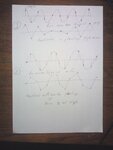Osawa_Odessa
Banned

Hi, could anyone help me. I need to determine sampling frequency for a system including many bands simultaneously. Here are bands with their center frequency and bandwidth. fc1= 117.18MHz and BW = 10MHz; fc2=168.33MHz and BW=20MHz; fc3=66.03MHz and BW=25MHz; fc4 = 106.72MHz and BW= 25MHz. I got stuck here, don't know what sampling frequency or frequency range that i should use to avoid alaising beween bands.








